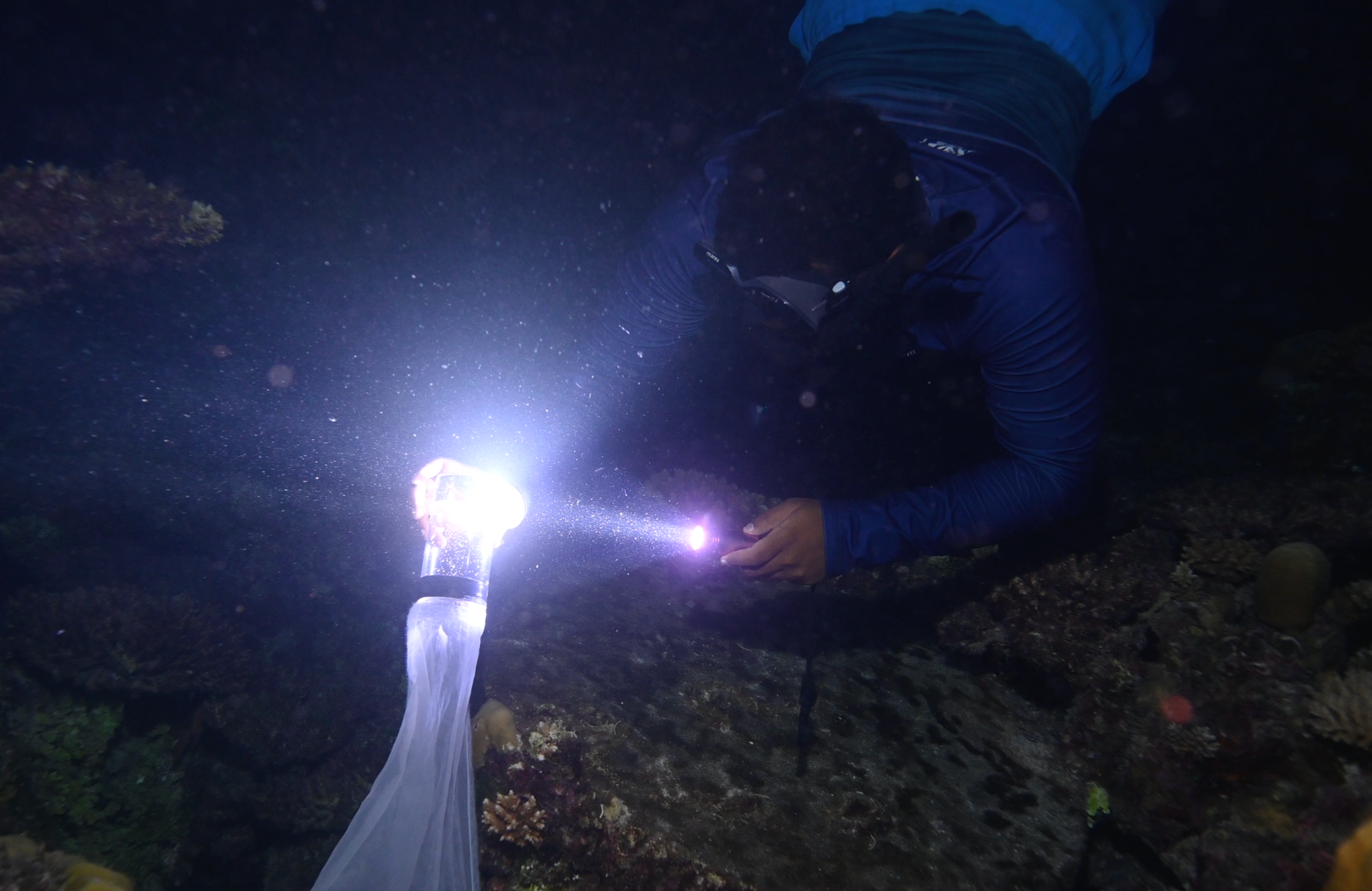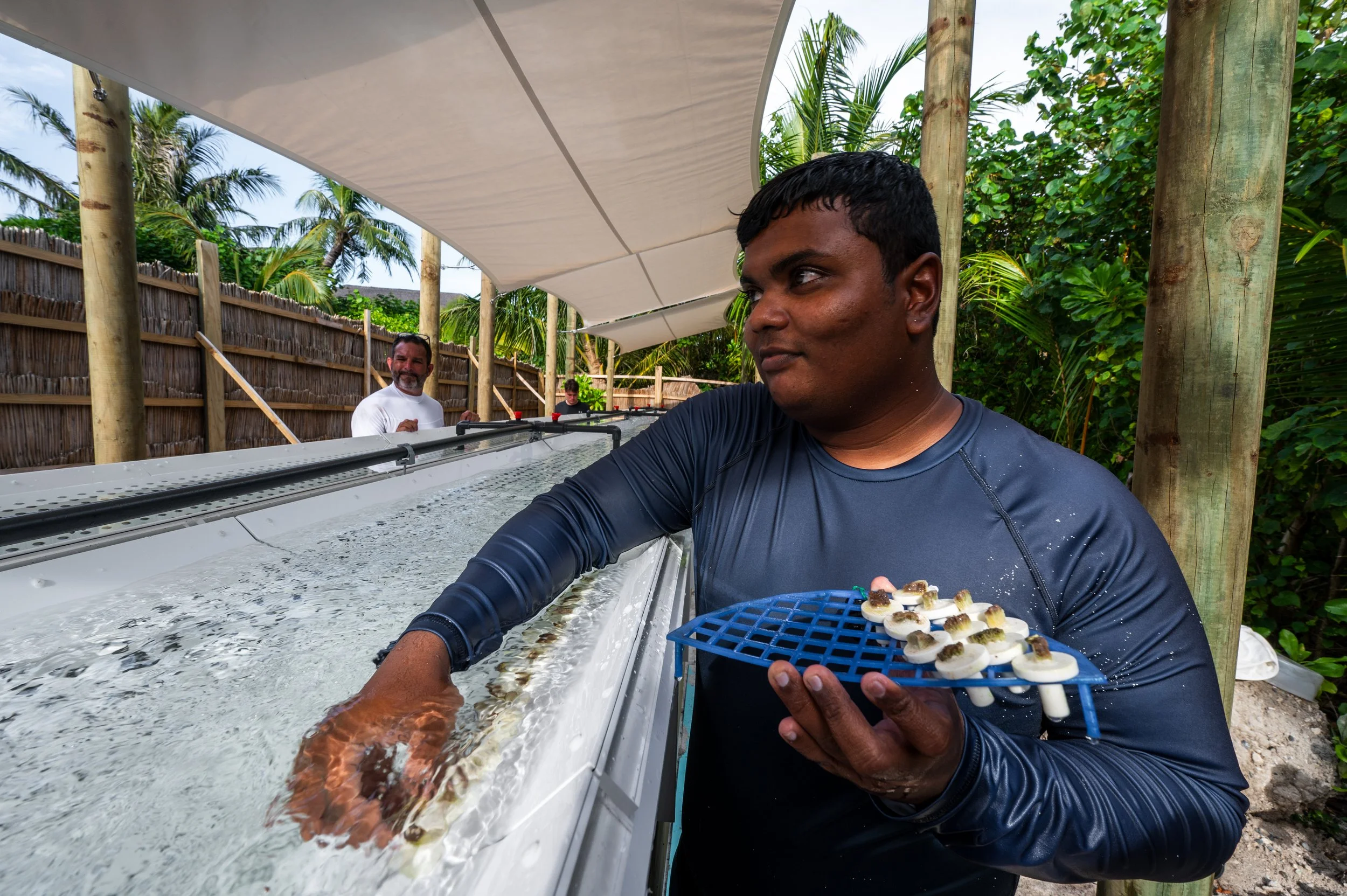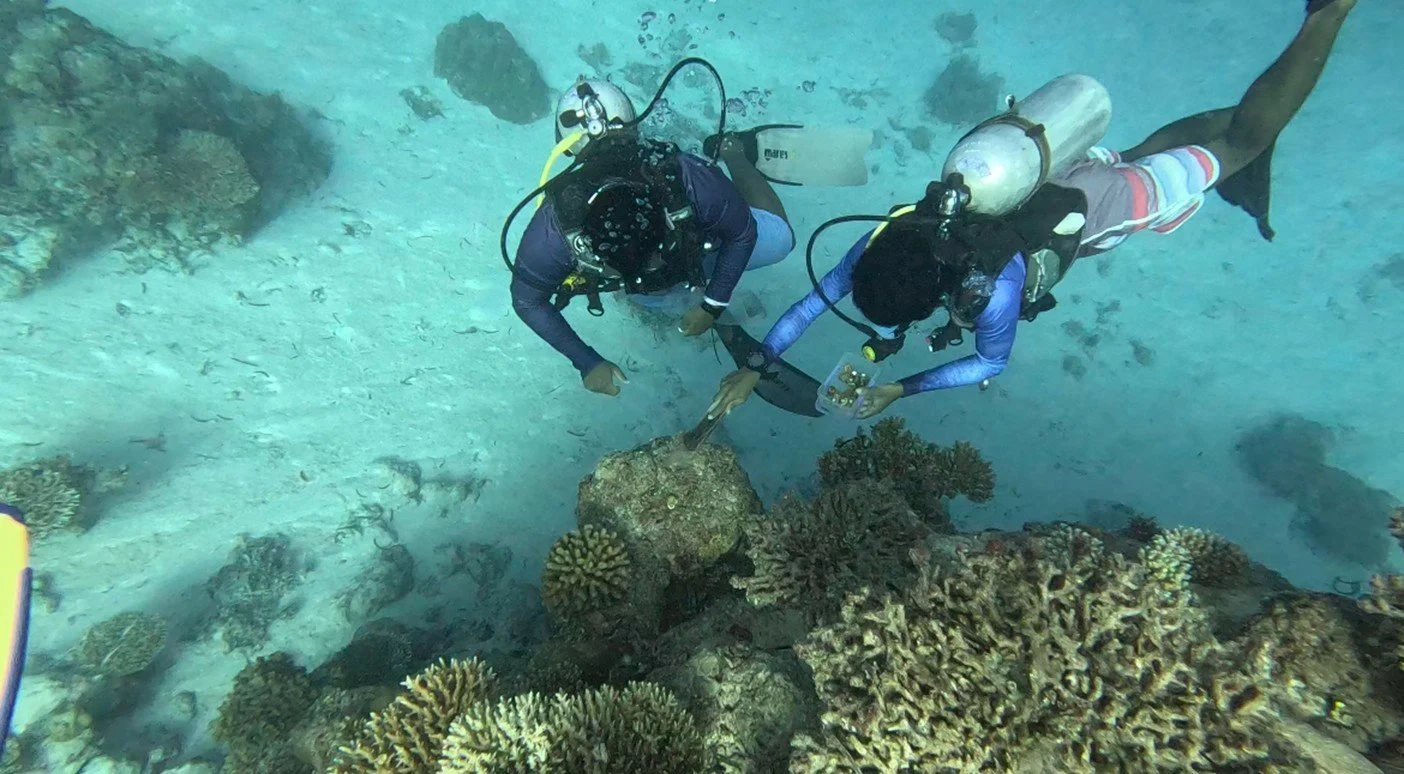FIRST MAJOR CORAL PLANTING IN LAAMU
As many of our readers know, coral reefs around the world have suffered severe bleaching events over the past few decades—in 1998, 2016, and most recently, in 2024. These mass bleaching events, triggered by rising ocean temperatures, have had a catastrophic impact on coral ecosystems. Following the 2016 bleaching alone, the Maldives lost over 75% of its coral cover—an ecological crisis with far-reaching consequences for marine life, coastal protection, and local livelihoods.
Coral reefs may only cover a small fraction of the ocean floor, but they support nearly 25% of all marine biodiversity. When coral dies, the ripple effects stretch across the entire ecosystem—from tiny reef fish to sea turtles, manta rays, and even humans. That’s why restoration efforts are more important now than ever before.
In response to the most recent bleaching in 2024, the Maldives Underwater Initiative (MUI) has expanded their ambitious new coral restoration program. Led on site by Mahil Ahmed, also known as Coco, MUI’s coral biologist, the project blends two key restoration techniques: larval restoration and coral fragmentation.
MUI researchers in Laamu
A Two-Pronged Approach to Reef Recovery
1. Larval Restoration
This delicate technique begins with nighttime dives during coral spawning events. During these rare and time-sensitive windows, our team collects coral gametes—bundles of eggs and sperm released by mature corals. Back on shore, these gametes are fertilized and nurtured in a controlled and save environment for about seven days. Once the embryos begin to develop, most are released back onto the reef, with the hope that they will settle, survive, and grow into healthy coral colonies. A smaller batch is kept in the lab to grow under protective conditions before being transplanted onto the reef at a later stage.
Coco checking coral gametes in the collection device
2. Coral Fragmentation
The second strategy focuses on microfragmentation—cutting healthy coral colonies into smaller fragments, which are then attached to coral plugs. These plugs are transferred to our nursery at the SHELL, the Sea Hub of Environmental Learning in Laamu, where they are carefully monitored and allowed to grow for up to a year. So far, the team has created over 1,000 coral plugs, each one a small but powerful contribution to reef restoration.
Coral researcher Coco with coral plugs at the coral nursery
The First Planting Dive
This June, Coco and the restoration team—Joe, Hadin, and Clemmie—embarked on their first major coral planting dives. Diving between the Chill Bar and the Dive Jetty of Six Senses Laamu, they successfully planted 64 baby corals onto the reef. Each plug was nestled into natural crevices and secured with putty resin to anchor it firmly in place. This hands-on work ensures the young corals have the best chance of survival as they begin to establish themselves, and this dive marks just the beginning of many to come.
A Message of Hope
Coral restoration is a long-term commitment. While there is no quick fix to the damage caused by climate change, efforts like these represent hope in action. With continued research, innovation, and community involvement, we believe the reefs of the Maldives can once again flourish. We’ll be sharing more updates as the project progresses, so stay tuned—and thank you for supporting the Maldives Underwater Initiative.
The team plant corals onto the reef of Six Senses Laamu




